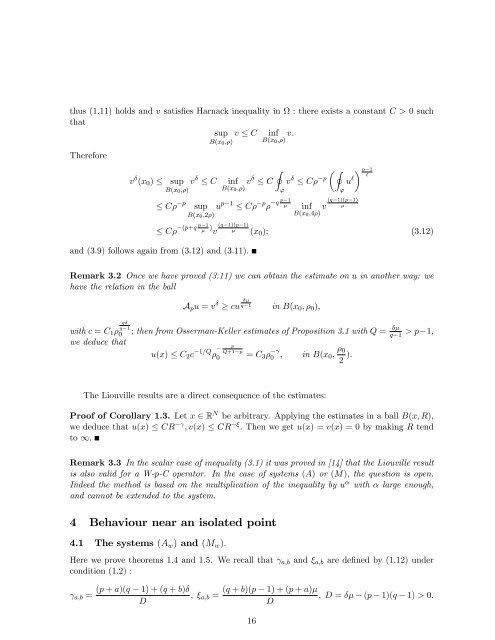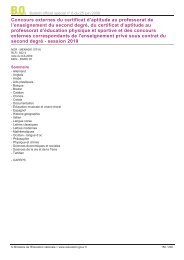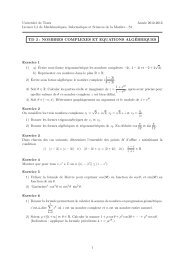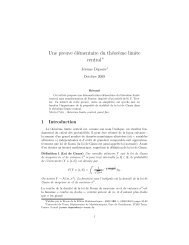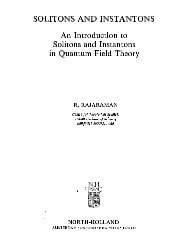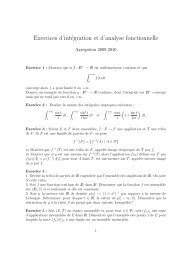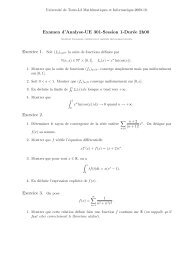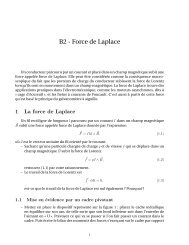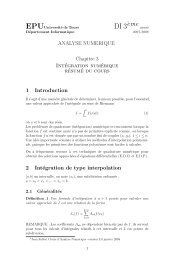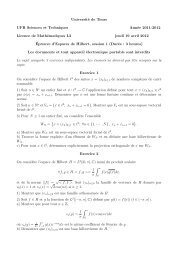Keller-Osserman estimates for some quasilinear elliptic ... - LMPT
Keller-Osserman estimates for some quasilinear elliptic ... - LMPT
Keller-Osserman estimates for some quasilinear elliptic ... - LMPT
You also want an ePaper? Increase the reach of your titles
YUMPU automatically turns print PDFs into web optimized ePapers that Google loves.
thus (1.11) holds and v satisfies Harnack inequality in Ω : there exists a constant C > 0 suchthatsup v ≤ C inf v.B(x 0 ,ρ) B(x 0 ,ρ)There<strong>for</strong>ev δ (x 0 ) ≤sup v δ ≤ CB(x 0 ,ρ)≤ Cρ −psupB(x 0 ,2ρ)II p−1infB(x 0 ,ρ) vδ ≤ C v δ ≤ Cρ −p u l lϕϕu p−1 ≤ Cρ −p p−1−qρ µ inf v (q−1)(p−1)µB(x 0 ,4ρ)p−1−(p+q≤ Cρ µ ) v (q−1)(p−1)µ (x 0 ); (3.12)and (3.9) follows again from (3.12) and (3.11).Remark 3.2 Once we have proved (3.11) we can obtain the estimate on u in another way: wehave the relation in the ballqδA p u = v δ ≥ cu δµq−1 in B(x 0 , ρ 0 ),q−1with c = C 1 ρ0 ; then from <strong>Osserman</strong>-<strong>Keller</strong> <strong>estimates</strong> of Proposition 3.1 with Q = δµq−1 > p−1,we deduce thatu(x) ≤ C 2 c −1/Q ρ − pQ+1−p0 = C 3 ρ −γ0 , in B(x 0, ρ 02 ).The Liouville results are a direct consequence of the <strong>estimates</strong>:Proof of Corollary 1.3. Let x ∈ R N be arbitrary. Applying the <strong>estimates</strong> in a ball B(x, R),we deduce that u(x) ≤ CR −γ , v(x) ≤ CR −ξ . Then we get u(x) = v(x) = 0 by making R tendto ∞.Remark 3.3 In the scalar case of inequality (3.1) it was proved in [14] that the Liouville resultis also valid <strong>for</strong> a W-p-C operator. In the case of systems (A) or (M), the question is open.Indeed the method is based on the multiplication of the inequality by u α with α large enough,and cannot be extended to the system.4 Behaviour near an isolated point4.1 The systems (A w ) and (M w ).Here we prove theorems 1.4 and 1.5. We recall that γ a,b and ξ a,b are defined by (1.12) undercondition (1.2) :γ a,b =(p + a)(q − 1) + (q + b)δ, ξ a,b =D(q + b)(p − 1) + (p + a)µ, D = δµ − (p − 1)(q − 1) > 0.D16


